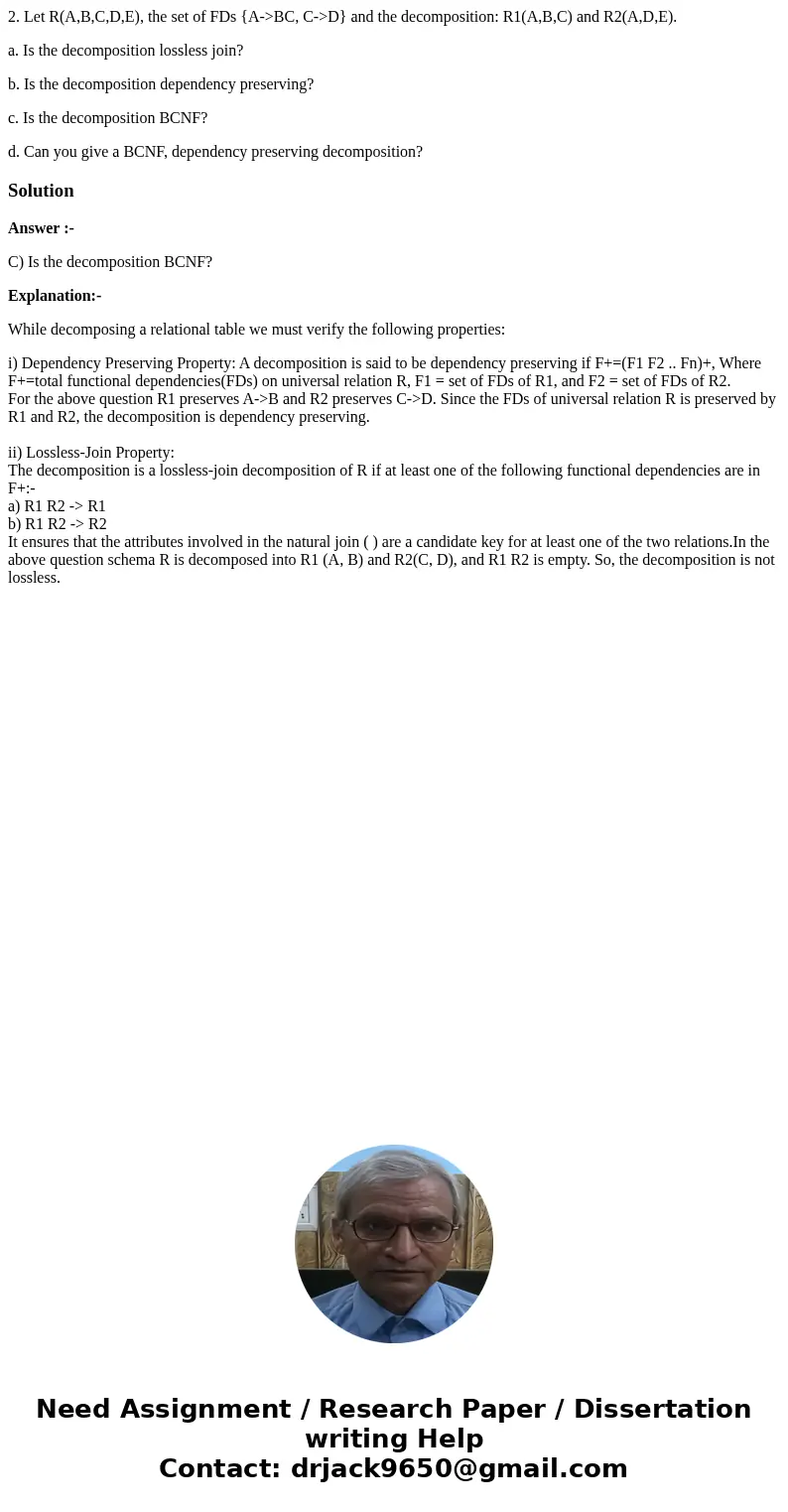2 Let RABCDE the set of FDs ABC CD and the decomposition R1A
2. Let R(A,B,C,D,E), the set of FDs {A->BC, C->D} and the decomposition: R1(A,B,C) and R2(A,D,E).
a. Is the decomposition lossless join?
b. Is the decomposition dependency preserving?
c. Is the decomposition BCNF?
d. Can you give a BCNF, dependency preserving decomposition?
Solution
Answer :-
C) Is the decomposition BCNF?
Explanation:-
While decomposing a relational table we must verify the following properties:
i) Dependency Preserving Property: A decomposition is said to be dependency preserving if F+=(F1 F2 .. Fn)+, Where F+=total functional dependencies(FDs) on universal relation R, F1 = set of FDs of R1, and F2 = set of FDs of R2.
For the above question R1 preserves A->B and R2 preserves C->D. Since the FDs of universal relation R is preserved by R1 and R2, the decomposition is dependency preserving.
ii) Lossless-Join Property:
The decomposition is a lossless-join decomposition of R if at least one of the following functional dependencies are in F+:-
a) R1 R2 -> R1
b) R1 R2 -> R2
It ensures that the attributes involved in the natural join ( ) are a candidate key for at least one of the two relations.In the above question schema R is decomposed into R1 (A, B) and R2(C, D), and R1 R2 is empty. So, the decomposition is not lossless.

 Homework Sourse
Homework Sourse